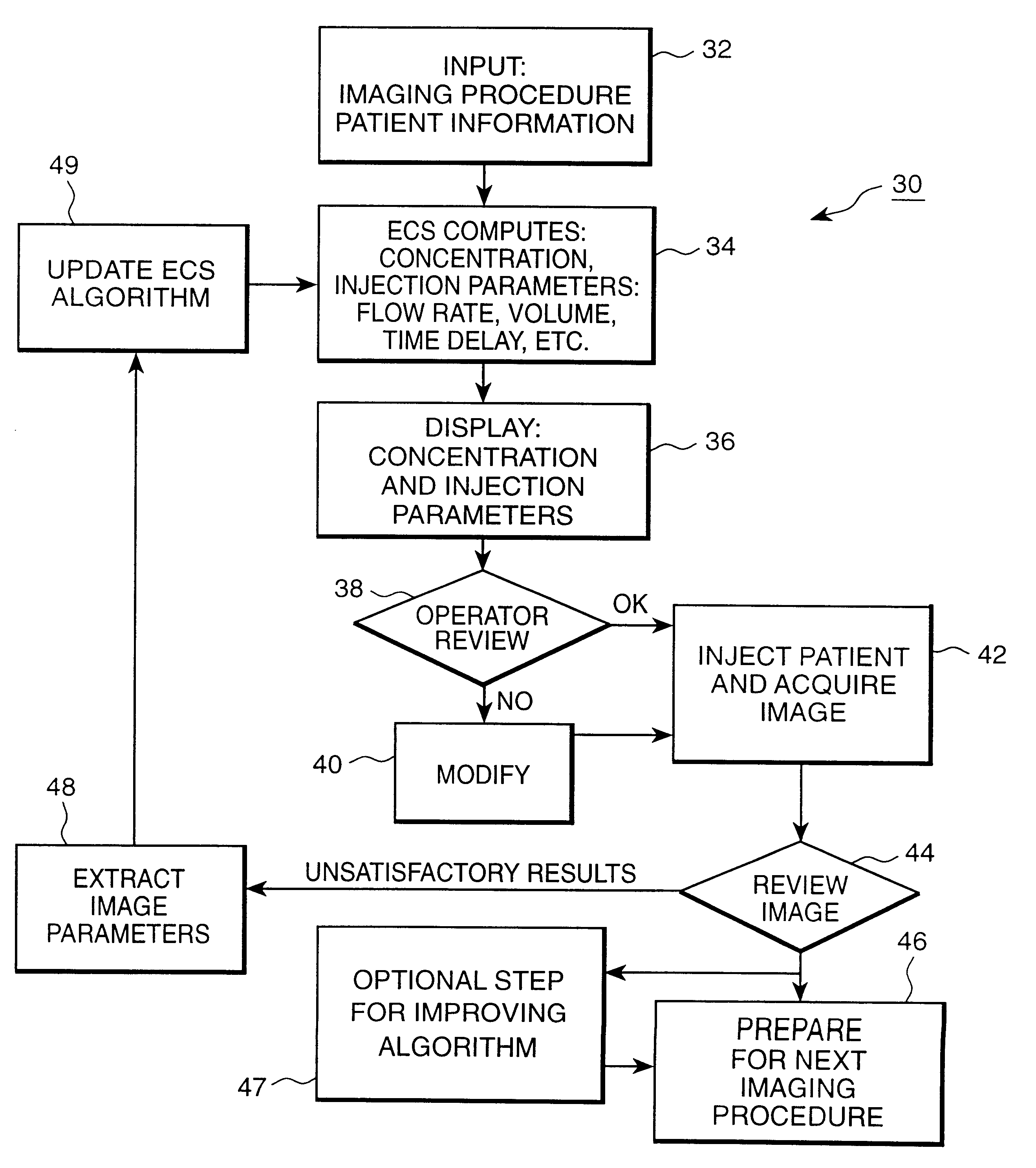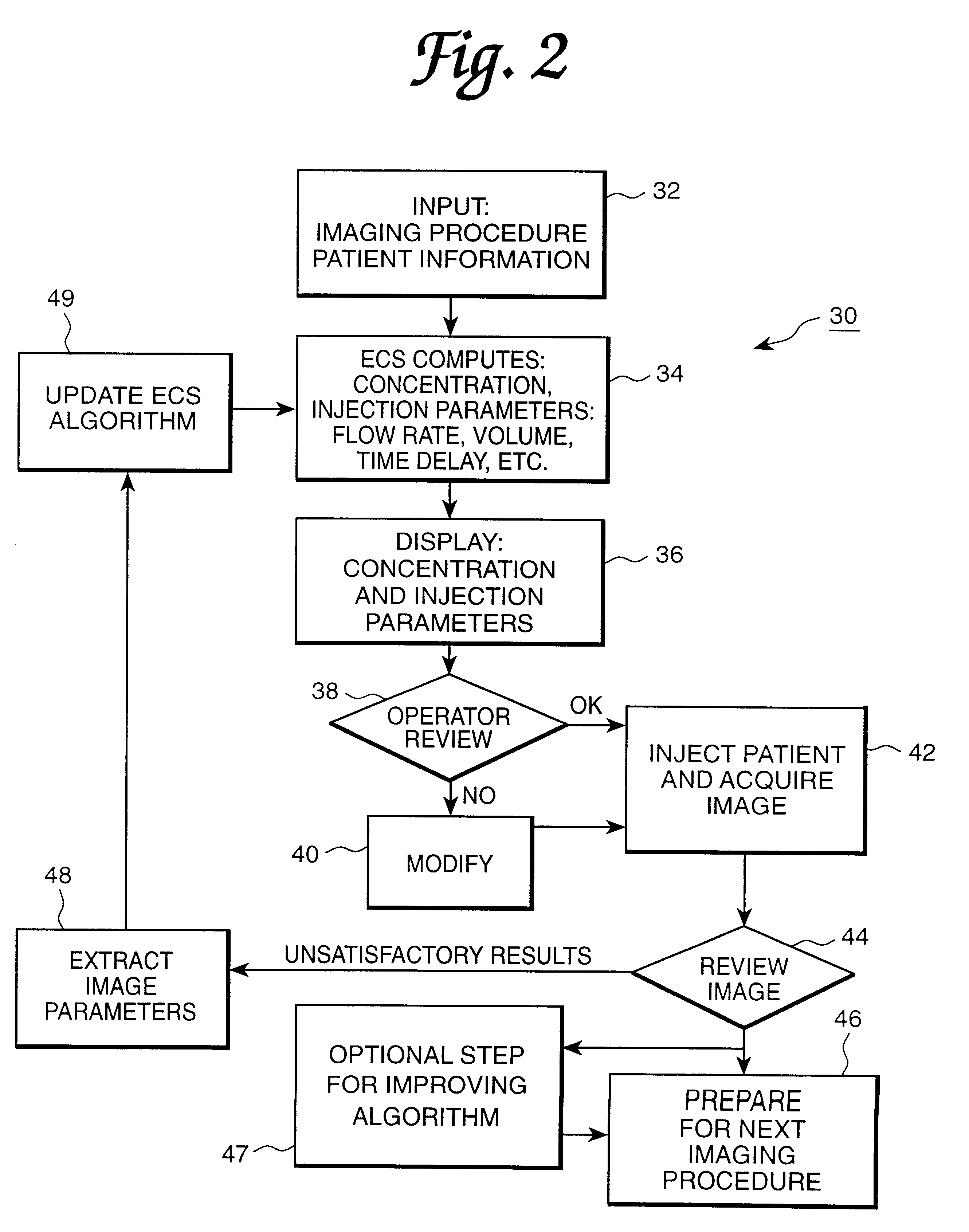Patient specific dosing contrast delivery systems and methods
a technology of contrast delivery system and patient, applied in the direction of instruments, process and machine control, ultrasonic/sonic/infrasonic diagnostics, etc., can solve the problems of not being used on another patient, different results in image contrast and quality, and increasing patient risk
- Summary
- Abstract
- Description
- Claims
- Application Information
AI Technical Summary
Benefits of technology
Problems solved by technology
Method used
Image
Examples
Embodiment Construction
FIG. 1 is a flow diagram showing a conventional medical imaging procedure for implementation of a standard protocol. This diagram is indicated generally by the numeral 10. The imaging procedure standard protocol is selected at first operative step 11, and a decision is made at step 12 as to whether the patient's weight is within a broad range considered to be appropriate for the particular concentration of contrast media and set of injection parameters for the selected protocol. If the patient's weight is within the broad range of weights acceptable for the particular contrast media and set of injection parameters, the standard protocol is determined to be appropriate at step 14. The patient is injected and the image is acquired at step 18. Alternatively, if the weight of the patient is not within the given range, an alternate contrast media concentration and set of injection parameters are chosen at step 16. Once the alternate concentration or set of injection parameters are chosen...
PUM
 Login to View More
Login to View More Abstract
Description
Claims
Application Information
 Login to View More
Login to View More - R&D
- Intellectual Property
- Life Sciences
- Materials
- Tech Scout
- Unparalleled Data Quality
- Higher Quality Content
- 60% Fewer Hallucinations
Browse by: Latest US Patents, China's latest patents, Technical Efficacy Thesaurus, Application Domain, Technology Topic, Popular Technical Reports.
© 2025 PatSnap. All rights reserved.Legal|Privacy policy|Modern Slavery Act Transparency Statement|Sitemap|About US| Contact US: help@patsnap.com



